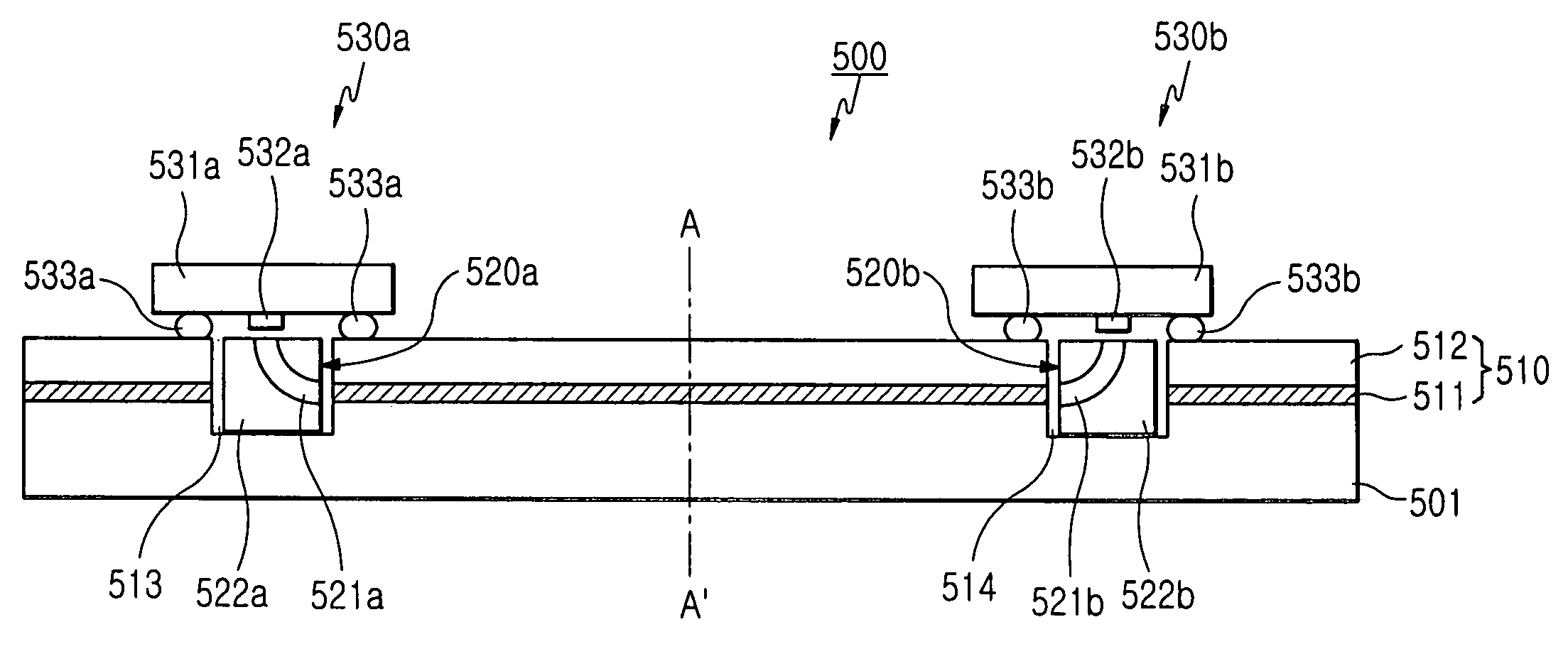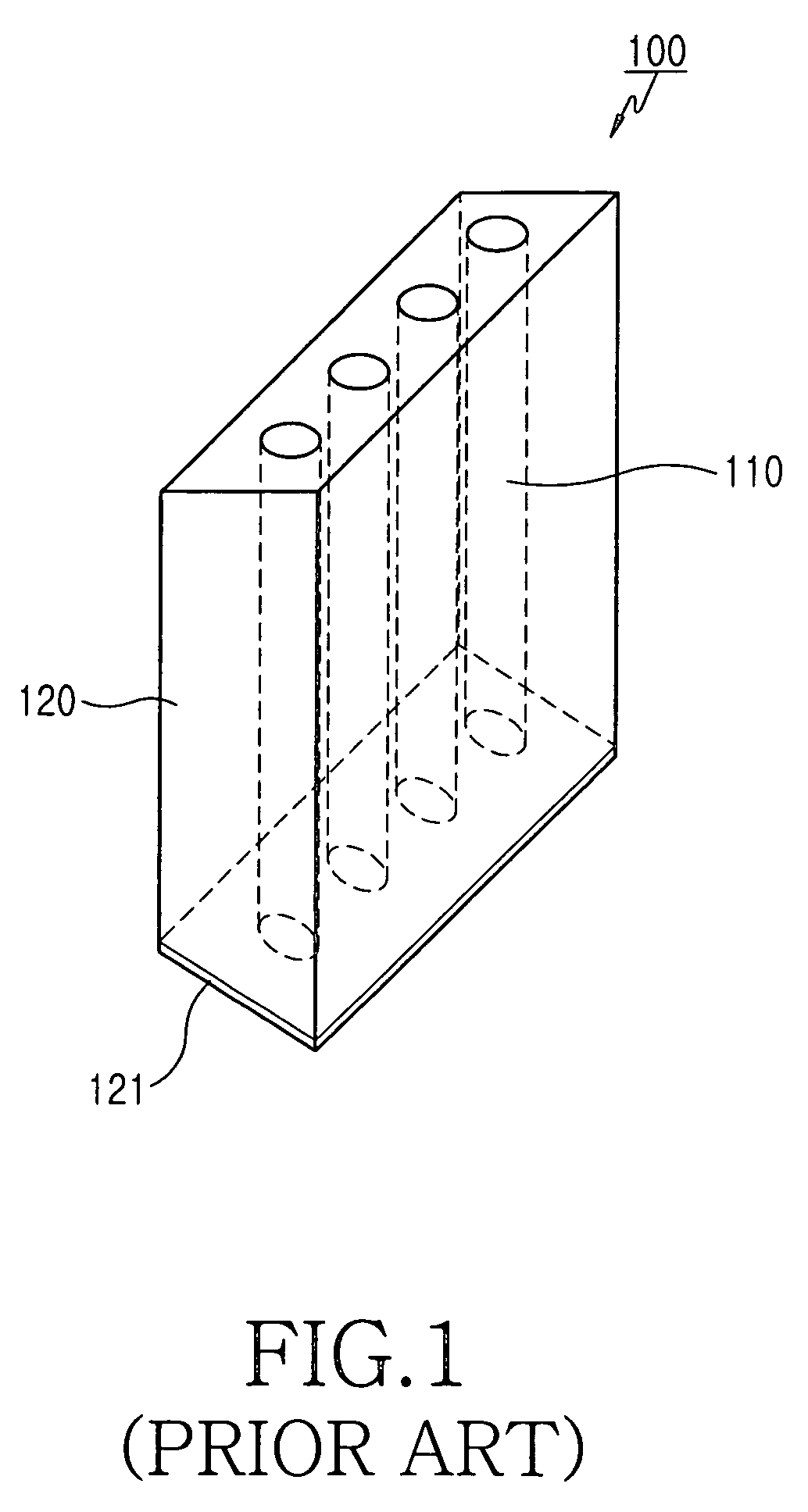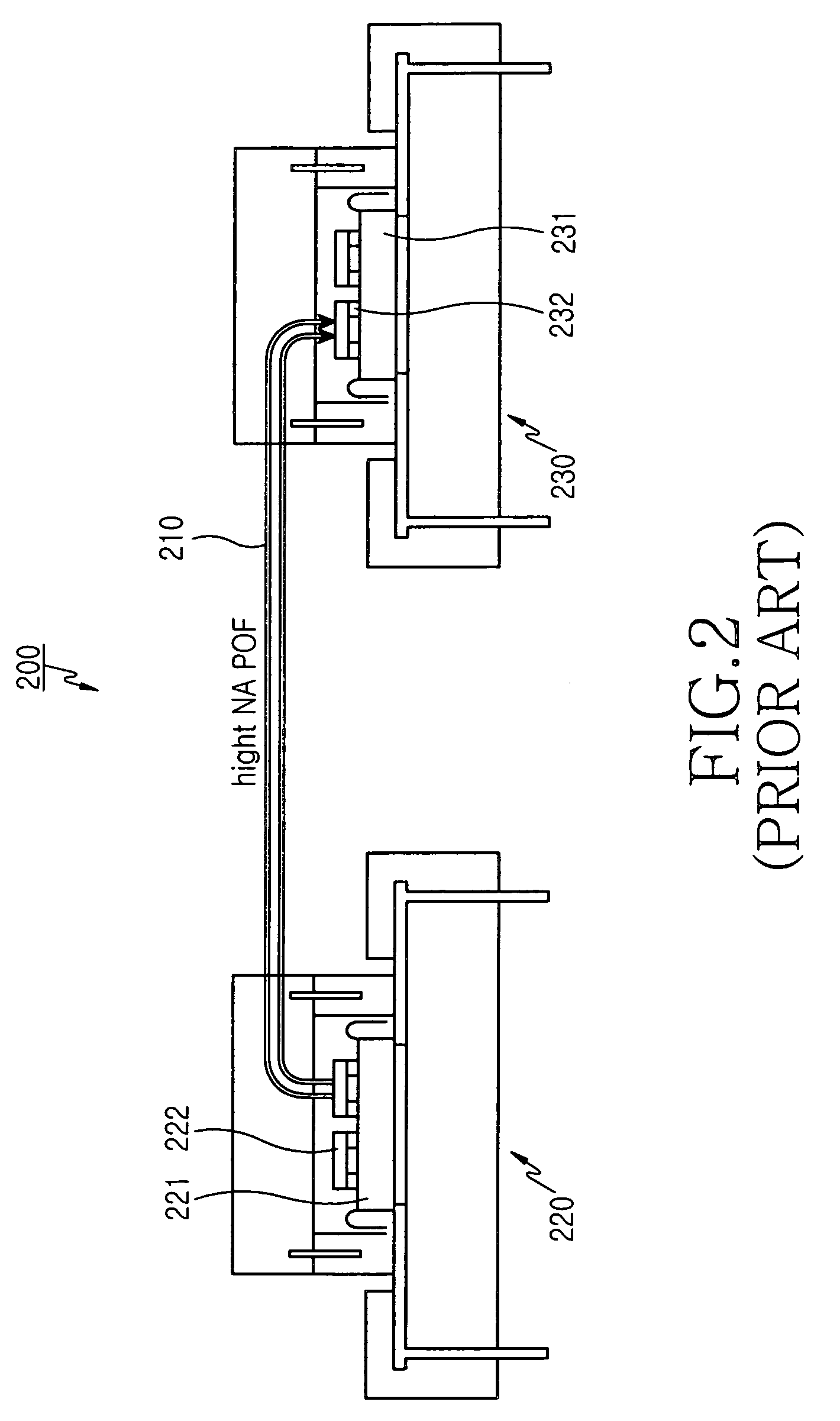Optical connection block, optical module, and optical axis alignment method using the same
a technology of optical connection block and optical module, applied in the field of optical modules, can solve the problems of difficult manufacturing, communication device connected by copper line, inconvenient high-speed pcbs, etc., and achieve the effect of improving optical axis alignment and being easy to manufactur
- Summary
- Abstract
- Description
- Claims
- Application Information
AI Technical Summary
Benefits of technology
Problems solved by technology
Method used
Image
Examples
fourth embodiment
[0050]FIG. 4A shows an optical module including an optical connection block according to the present invention. FIG. 4B is a sectional view of the structure of a planar optical waveguide shown in FIG. 4a taken along line A-A′. Referring to FIGS. 4A and 4B, an optical module 400 includes a substrate 401, a planar optical waveguide 410 formed on the substrate 401, at least one PCB, and a plurality of optical connection blocks 420a and 420b.
[0051]The planar optical waveguide 410 may be created on the substrate 401 by a semiconductor process. and the planar optical waveguide 410 includes a plurality of waveguides 412 and a plurality of grooves 410a and 410b. The planar optical waveguide 410 has a lower clad 411, a core (not shown), and an upper clad 413 that may be successively laminated on the substrate 401. More specifically, after a lower clad 411 and a core layer are successively laminated on the substrate 401, the core layer is processed by an etching process to form a plurality o...
fifth embodiment
[0065]FIG. 5 shows an optical module including an optical connection block according to the present invention. FIG. 6 is a sectional view showing the structure of a planar optical waveguide shown in FIG. 5. Referring to FIG. 5, an optical module 500 includes a substrate 501, an optical fiber block 510 formed on the substrate 501, at least one PCB 530a and 530b, and a plurality of optical connection blocks 520a and 520b. The substrate 501 has a plurality of V-grooves formed on the upper surface thereof.
[0066]Referring to FIG. 6, which is a sectional view taken along line A-A′ of FIG. 5, the optical fiber block 510 includes a plurality of first optical fibers 511 seated on the respective V-grooves of the substrate 501 and an upper block 512 for covering the substrate 501, on which the first optical fibers 511 are seated. The upper block 512 has a plurality of V-grooves (not shown) for holding the first optical fibers 511 in a stable manner.
second embodiment
[0067]The construction of the optical module 500 is the same as that of the present invention, and repeated descriptions thereof will be omitted.
PUM
 Login to View More
Login to View More Abstract
Description
Claims
Application Information
 Login to View More
Login to View More - R&D
- Intellectual Property
- Life Sciences
- Materials
- Tech Scout
- Unparalleled Data Quality
- Higher Quality Content
- 60% Fewer Hallucinations
Browse by: Latest US Patents, China's latest patents, Technical Efficacy Thesaurus, Application Domain, Technology Topic, Popular Technical Reports.
© 2025 PatSnap. All rights reserved.Legal|Privacy policy|Modern Slavery Act Transparency Statement|Sitemap|About US| Contact US: help@patsnap.com



